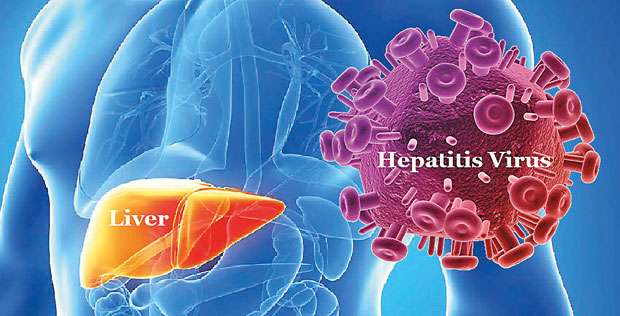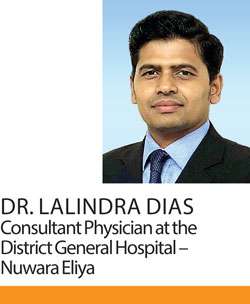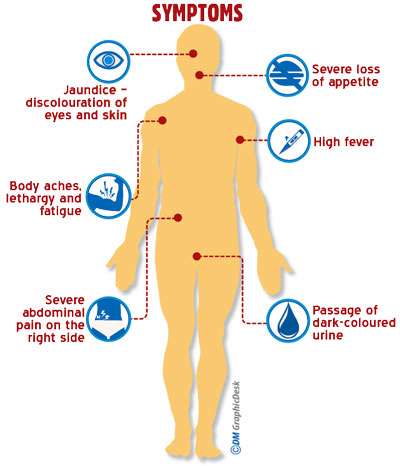27 Jul 2018 - {{hitsCtrl.values.hits}}

 Hepatitis is one of those infections that people are less aware of. Unless tested, one wouldn’t detect this viral infection as its symptoms appear only in selected instances. Hence the global campaign launched by the World Health Organisation (WHO) aims to test and treat this infection before it spreads to the rest of the world population. Statistics reveal that around 325 million people around the world are living with viral Hepatitis while 290 million of them are unaware of the symptoms.
Hepatitis is one of those infections that people are less aware of. Unless tested, one wouldn’t detect this viral infection as its symptoms appear only in selected instances. Hence the global campaign launched by the World Health Organisation (WHO) aims to test and treat this infection before it spreads to the rest of the world population. Statistics reveal that around 325 million people around the world are living with viral Hepatitis while 290 million of them are unaware of the symptoms.
In view of World Hepatitis Day, which is annually celebrated on July 28, the Daily Mirror spoke to Dr. Lalindra Dias, Consultant Physician at the District General Hospital – Nuwara Eliya, who elaborated on the types of Hepatitis, symptoms, treatment and prevention.
Inflammation of the liver 
Hepatitis is the inflammation of the liver. Hepatitis infections are prevalent among countries with a poor socio-economic status. As such Sri Lanka too is affected as a result of varieties of Hepatitis infections. Infections could be contracted by both males, females and children. The condition can be self-limiting or could progress to fibrosis, cirrhosis or liver cancer.
Types
According to Dr. Dias there are both infectious and non-infectious causes of Hepatitis. “Infectious causes include Hepatitis A,B,C,D and E while there are various non-infectious causes,” he said. “Among the most common non-infectious causes is Nonalcoholic steato-hepatitis (NASH) also known as Nonalcoholic Fatty Liver disease. Alcohol is another leading cause of non-infectious Hepatitis. Various medications such as paracetamol and anti-inflammatory drugs for pain relief should be avoided. This also includes limiting the excessive usage of herbal preparations. Other causes included autoimmune diseases and genetic and familial causes,”the doctor added.
Infectious types 
“Among the infectious types of Hepatitis, Hepatitis A and E are most common,” Dr. Dias added. “These two types are mainly transmitted through faeco-oral transmissions. These transmissions occur when patients don’t have good toilet practices and due to lack of poor sanitation. In turn they touch food and water and the infection is carried on. This is a common infection during floods and among people who live in slums and close communities. However there are vaccinations to prevent the Hepatitis A infection. On the other hand Hepatitis B and C are transmitted through unprotected sexual practices with unknown partners.
Another reason is due to sharing of intravenous needles among drug users and very rarely through emergency blood transfusions. But nowadays the transmission through blood and blood products is extremely rare due to widely available high-tech screening programmes. These two types could also be transmitted from an infected mother to a foetus,”he explained. Speaking further Dr. Dias said that other infectious causes such as dengue fever and leptospirosis could also lead up to
Hepatitis infection.
Non-infectious types
As mentioned before, NASH is one of the common causes of non-infectious Hepatitis. “This is common among patients with diabetes, high cholesterol and those who are obese,” Dr. Dias continued. “In order to prevent NASH it is important to control diabetes and reduce weight. In addition to that, high intakes of alcohol could lead to Hepatitis infections and patients could end up having cirrhosis,”he affirmed.
How do you know that you are infected?
Some of the acute features include the following :
“If one develops the above symptoms, it is advisable to consult a doctor,” Dr. Dias added. “Usually Hepatitis A and E improve without many complications. But Hepatitis B and C could lead to chronic Hepatitis and patients could ultimately end up with cirrhosis. It could sometimes also culminate in conditions such as liver cancer.”he said.
Prevention and treatments
He further said that the Hepatitis infection could cause grave consequences such as cirrhosis, cancer and ultimately death. “Therefore it is important to prevent it to the best of your ability,” he continued. “This could be achieved through safe sexual practices, cutting down on excessive consumption of alcohol, not sharing intravenous drug needles, controlling diabetes and reducing weight. If you have the above symptoms, it is important that you seek medical attention. The doctor will do a couple of blood tests while testing liver enzymes and doing an ultrasound scan of the liver.” he said.
According to Dr. Dias, Hepatitis A and E require symptomatic management. “This includes controlling the temperature, keeping the patient hydrated and avoiding liver-toxic drugs. While at the hospital, the doctors will safeguard the patient from further liver damage. Hepatitis could also be cured through vaccinations; for example Hepatitis B is already included in the National Immunisation Schedule. It is also advisable to get the Hepatitis A vaccination before travelling to countries such as India and Africa,”he stressed.
Aftercare
“Once a patient has recovered from a Hepatitis infection he or she should take precautions,” he added. “As such a patient shouldn’t take painkillers such as paracetamol, anti-inflammatory drugs and also avoid the excessive usage of herbal medications.
Patients should also cut down on the excessive consumption of alcohol and recreational drugs. Those who have been infected with Hepatitis A and E should engage in good sanitary and hygienic practices so that the infection isn’t transmitted to others. If a child has contracted Hepatitis, it is advisable that he or she doesn’t attend school during this period. It is the same with adults and patients are advised to rest as much as possible. In order to prevent Hepatitis B and C there are anti-viral agents that could be administered to patients,”he said.
According to the World Health Organisation (WHO) viral hepatitis B and C are major health challenges, affecting 325 million people globally. They are root causes of liver cancer and leads to 1.34 million deaths every year.
Hepatitis B and C are chronic infections that may not show symptoms for a long period; sometimes years or decades. At least 60% of liver cancer cases are due to late testing and treatment of viral hepatitis B and C. Low coverage of testing and treatment is the most important gap to be addressed in order to achieve the global elimination goals by 2030.
WHO will focus on the theme: ‘Test. Treat. Hepatitis’ in view of World Hepatitis Day 2018. WHO organises events and activities with the aim to achieve the following objectives globally, in regions and in countries:
22 Dec 2024 3 hours ago
22 Dec 2024 3 hours ago
22 Dec 2024 6 hours ago
22 Dec 2024 6 hours ago
22 Dec 2024 6 hours ago